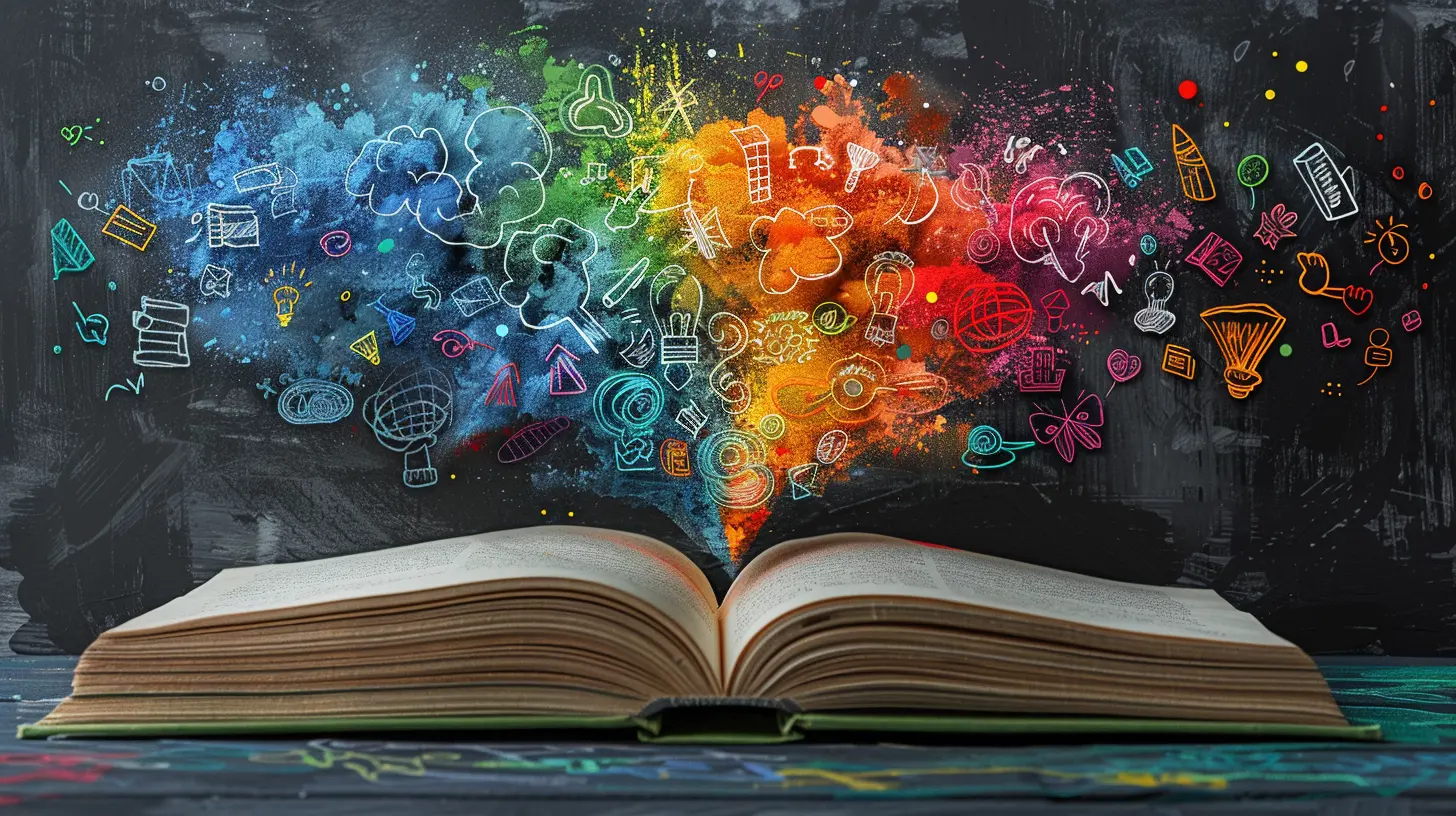The Zone of Proximal Development: Vygotsky’s Key Contribution to Education
31 December 2024
When it comes to understanding how children learn, one name that stands out is Lev Vygotsky. His ideas have had a massive impact on education, especially his concept of the Zone of Proximal Development (ZPD). Never heard of it? No worries, you're in the right place. This article will break it all down in a way that's easy to digest.
We’ll explore what the Zone of Proximal Development is, why it’s crucial in education, and how teachers and parents can use it to help children reach their full potential. Let’s dive in.

What is the Zone of Proximal Development (ZPD)?
The Zone of Proximal Development is like a sweet spot for learning. Imagine a child trying to solve a puzzle. There are some puzzles they can solve on their own, no sweat. Then there are puzzles that are way too difficult—they wouldn’t know where to start. But in between, there's a set of puzzles that they could solve, but only if someone gave them a little help. That "in-between" zone is what Vygotsky called the Zone of Proximal Development.In simple terms, the ZPD is the gap between what a learner can do independently and what they can do with guidance. And that guidance—whether it’s from a teacher, parent, or peer—is what makes all the difference.
Why is the ZPD Important?
Why does this "zone" matter so much? Well, Vygotsky believed that children learn best when they’re in this sweet spot of challenge. If something is too easy, they’ll get bored. If it’s too hard, they’ll get frustrated and give up. But if it’s just challenging enough, and they have the right support, they’ll stay engaged and make real progress.Think of it like lifting weights. If you try to lift something way too heavy, you might hurt yourself or just not be able to do it. But if someone spots you or helps you lift a little, you can manage and eventually get stronger. The ZPD works in a similar way for mental growth.

Scaffolding: The Key to Unlocking the ZPD
Now, you might be wondering—how exactly do you help someone within their ZPD? That’s where the idea of "scaffolding" comes in.What is Scaffolding?
Scaffolding is a teaching method where you provide just enough support to help the learner succeed, but not so much that you’re doing the work for them. Picture a building under construction. Scaffolding is set up around the structure to help workers reach higher levels. Once the building is stable, the scaffolding is removed because it's no longer needed.Similarly, in education, scaffolding could be asking guiding questions, giving hints, or breaking down a big problem into smaller, more manageable parts. Over time, as the learner becomes more confident and capable, the scaffolding is gradually removed. Eventually, they can solve the problem on their own.
How Does Scaffolding Work in Real Life?
Let’s say a child is learning how to read. A teacher might start by reading the text aloud while the child follows along. Then, as the child becomes more comfortable, the teacher might ask the child to read certain words or sentences. Over time, the child will be able to read the whole text independently without the teacher’s help. This gradual release of responsibility is scaffolding in action.
The Social Aspect of Learning
One of Vygotsky’s most revolutionary ideas is that learning is inherently social. He believed that children learn best when they interact with others, especially those who are more knowledgeable. Whether it's a teacher, a parent, or even a more skilled peer, these interactions are key to moving through the ZPD.The Role of More Knowledgeable Others (MKOs)
In any learning situation, there’s usually someone who knows more than the learner. Vygotsky referred to these people as "More Knowledgeable Others" (MKOs). MKOs could be anyone—a teacher, an older sibling, or even a classmate who’s just a step ahead.The role of the MKO is to guide the learner through their ZPD by offering the right amount of help at the right time. Over time, the learner internalizes these skills and can complete the task independently.
Collaboration Over Competition
Vygotsky’s emphasis on the social aspect of learning highlights the importance of collaboration over competition. When learners work together, they’re not just competing to be the best—they’re helping each other grow. This is why group activities, peer learning, and discussions are so effective in classrooms. Kids aren’t just learning from the teacher; they’re learning from each other.
Applying the ZPD in Modern Education
So how can all this theory actually be applied in today’s classrooms or even at home? Let’s take a look.Differentiated Instruction
Every student learns at a different pace and has different needs. The ZPD encourages teachers to recognize these differences and tailor their instruction accordingly. Some students might need more scaffolding, while others may need less. Differentiated instruction means adjusting the level of challenge and support based on where each student is in their ZPD.For example, in a math class, some students might be solving basic equations independently, while others might need a little help getting started. A good teacher will recognize this and provide the right level of support for each student.
Formative Assessment
Formative assessments are ongoing checks for understanding that help teachers know where their students are in their ZPD. These assessments aren’t about giving grades—they’re about figuring out what a student knows and what they still need help with.Teachers can use quizzes, discussions, or even one-on-one conversations to gauge where a student is in their learning process. This way, they can adjust their teaching strategies to provide the right amount of scaffolding.
Encouraging Peer Learning
Remember the role of More Knowledgeable Others? That doesn’t always have to be the teacher. In fact, peer learning can be incredibly powerful. Students can often explain things to each other in ways that make sense because they’re at similar levels of understanding.Group activities, partner work, and peer tutoring are all great ways to encourage students to help each other move through their ZPDs. And let’s be honest—sometimes kids just listen to each other better than they listen to adults!
Vygotsky vs. Piaget: A Quick Comparison
Before we wrap up, it’s worth mentioning how Vygotsky’s ideas differ from another famous educational theorist, Jean Piaget. While both men made significant contributions to our understanding of how children learn, they had different perspectives.Piaget believed that children move through specific stages of cognitive development, and they can only learn certain things once they’ve reached a particular stage. In contrast, Vygotsky thought that learning could actually lead development. In other words, with the right support, children could tackle more complex tasks sooner than Piaget might have anticipated.
Piaget’s theory focuses more on the individual child’s development, while Vygotsky emphasizes the social and collaborative nature of learning. Both perspectives have value, but Vygotsky’s ideas are particularly influential in today’s classrooms, where collaboration and social interaction are key components of learning.
Final Thoughts: Why the ZPD Still Matters
The Zone of Proximal Development might be a concept from the 1930s, but it’s just as relevant today as ever. In fact, it’s foundational to many modern educational practices, like differentiated instruction, formative assessment, and peer learning. By understanding and applying the ZPD, teachers and parents can help children grow into confident, independent learners.So next time you’re helping a child with their homework or watching them learn something new, remember Vygotsky’s words: It’s not just about what they can do now—it’s about what they could do with a little help. And that’s where the magic happens.
all images in this post were generated using AI tools
Category:
Psychological TheoriesAuthor:

Paulina Sanders
Discussion
rate this article
11 comments
Zevan McKee
Unlock potential through guided learning!
February 3, 2025 at 5:24 PM

Paulina Sanders
Absolutely! Guided learning is essential in the zone of proximal development, enabling educators to effectively support and unlock each learner's potential.
Vesperos McVicar
What a delightful exploration of Vygotsky’s Zone of Proximal Development! 🎉 Understanding how guided learning can unlock potential is inspiring. It’s amazing to see how this concept continues to shape educational practices and empower both teachers and students! 🌟
January 29, 2025 at 4:47 PM

Paulina Sanders
Thank you! I'm glad you found the exploration of Vygotsky's concept inspiring—it truly is a powerful framework for enhancing learning and teaching. 🌟
Xavier Garcia
Great article! Vygotsky's concept of the Zone of Proximal Development is essential for understanding how supportive learning environments can enhance student growth and achievement.
January 26, 2025 at 4:36 AM

Paulina Sanders
Thank you! I'm glad you found it insightful. Vygotsky's ideas truly highlight the importance of supportive learning environments.
Karen Cole
Great insights! Vygotsky’s theory truly enhances our understanding of learning.
January 22, 2025 at 4:53 AM

Paulina Sanders
Thank you! I'm glad you found the insights on Vygotsky's theory valuable for understanding learning.
Teagan Pacheco
Thank you for shedding light on Vygotsky’s Zone of Proximal Development! Your insights on its implications for education are invaluable. It’s fascinating how this concept emphasizes the importance of guided learning and collaboration in fostering student growth. Looking forward to seeing more discussions on practical applications in the classroom!
January 17, 2025 at 6:03 PM

Paulina Sanders
Thank you for your thoughtful feedback! I'm glad you found the insights on Vygotsky's Zone of Proximal Development valuable. I appreciate your interest in practical applications, and I look forward to sharing more on this topic!
Maisie Miller
Great read! Vygotsky’s Zone of Proximal Development reminds us that learning thrives in supportive environments. Let’s embrace the power of collaboration and encouragement in education, helping each other reach new heights. Together, we can unlock amazing potential!
January 10, 2025 at 4:52 AM

Paulina Sanders
Thank you! I completely agree—collaboration and support are essential for maximizing learning within the Zone of Proximal Development. Together, we can truly elevate educational experiences!
Sylph McCollum
This article beautifully highlights Vygotsky's insights. Understanding the Zone of Proximal Development is essential for effective educational practices. Thank you!
January 2, 2025 at 4:36 AM

Paulina Sanders
Thank you for your kind words! I'm glad you found the article helpful in understanding Vygotsky's valuable contributions to education.
Thistle Kane
Learning together: where magic and growth happen!
January 1, 2025 at 4:08 PM

Paulina Sanders
Thank you! Indeed, learning together fosters collaboration and deeper understanding, perfectly illustrating Vygotsky's concept of the zone of proximal development.
Carson Kim
Vygotsky's zone: Where learning happens and procrastination takes a coffee break!
January 1, 2025 at 3:36 AM

Paulina Sanders
Thank you for your insightful comment! Indeed, the zone of proximal development highlights the balance between challenge and support, where true learning occurs—hopefully without too many coffee breaks!
Phaedra McWain
Great insights on Vygotsky’s impactful educational theories!
December 31, 2024 at 5:11 PM

Paulina Sanders
Thank you! I'm glad you found the insights on Vygotsky's theories valuable.
Selena Middleton
Thank you for this insightful article on Vygotsky’s Zone of Proximal Development. It beautifully highlights the importance of scaffolding in education and encourages educators to foster meaningful learner-teacher interactions. Truly a valuable perspective!
December 31, 2024 at 5:34 AM

Paulina Sanders
Thank you for your kind words! I'm glad you found the article insightful and valuable for educators.
MORE POSTS

A Beginner’s Guide to Meditation for Self-Care

The Complex Relationship Between Depression and Personality Disorders

The Role of Emotional Expression in Building Emotional Resilience

The Science Behind Psychotic Episodes

The Role of Self-Esteem in Overcoming Social Anxiety

How to Create a Mental Health Action Plan for Tough Times

Understanding Loneliness: Its Impact on Mental Health and How to Combat It

The Theory of Flow: What It Means to Be ‘In the Zone’